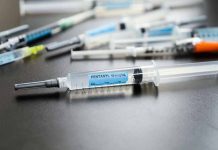
Well, folks, grab your wallets and brace yourselves for another jaw-dropping healthcare statistic. It turns out that our great nation is shelling out a cool $43 billion annually just to peek inside our bodies for those sneaky cancer cells. Now, before you start questioning whether a colonoscopy was worth the price of a small yacht, let’s dive into the nitty-gritty of this eye-watering figure and what it means for our healthcare system. Buckle up, patriots – we’re about to take a roller coaster ride through the land of medical economics!
Breaking Down the Billion-Dollar Bill
The United States spends approximately $43 billion each year on cancer screenings, focusing on five major types: breast, cervical, colorectal, lung, and prostate. This staggering amount accounts for a significant portion of the over $250 billion spent annually on cancer in the U.S. The analysis, published in the Annals of Internal Medicine, provides one of the most comprehensive estimates of medically recommended cancer testing costs to date.
Interestingly, more than 88% of these screening costs are covered by private insurance, with government programs picking up most of the remaining tab. This distribution of costs raises questions about the impact on insurance premiums and the sustainability of such expenditures in our healthcare system.
The Debate: Life-Saving Investment or Overused Resource?
While the costs are undeniably high, proponents of cancer screening argue that early detection is crucial for saving lives. Karen E. Knudsen, CEO of the American Cancer Society, emphasizes this point:
“We are talking about people’s lives. Early detection allows a better chance of survival. Full stop. It’s the right thing to do for individuals.”
However, some researchers contend that cancer screening is overused and that there’s a weak correlation between early detection and improved cancer survival rates. This ongoing debate highlights the need for a careful balance between cost-effectiveness and potentially life-saving preventive measures.
The Bigger Picture: Economic Ripple Effects
The $43 billion spent on cancer screenings doesn’t exist in a vacuum. It’s part of a larger economic ecosystem that includes healthcare providers, medical equipment manufacturers, and the pharmaceutical industry. This massive investment in preventive care creates jobs, drives innovation in medical technology, and potentially reduces long-term healthcare costs by catching cancers early.
However, it’s crucial to consider the opportunity cost of these expenditures. Could some of these funds be more effectively used in other areas of healthcare or cancer research? As conservative thinkers, we must always scrutinize large government and private sector spending to ensure we’re getting the best bang for our buck.
Looking Ahead: Balancing Cost and Care
As we grapple with the economic impact of these enormous cancer screening costs, it’s clear that difficult decisions lie ahead. We must find ways to maintain effective preventive care while also addressing the broader challenges facing our healthcare system. This may involve reassessing screening guidelines, improving the efficiency of testing procedures, or exploring innovative funding models to distribute costs more equitably.
One thing is certain: as patriotic Americans, we value both fiscal responsibility and the health of our fellow citizens. Finding the right balance between these priorities will be crucial as we navigate the complex landscape of healthcare economics in the years to come.
Sources:
- Study Puts a $43 Billion Yearly Price Tag on Cancer Screening
- U.S. Spends $43 Billion Annually on Cancer Screening
- US Spends $43 Billion Annually on Cancer Screening
- National Cancer Institute (NCI)
- Financial Burden of Cancer Care
More from Around the Web:
Financial Toxicity and Cancer Managing the Cost of Cancer Care Financial Health Planning:
The Mystery Behind Healthcare Costs:
Overdiagnosis in Cancer Screening: Overcoming Challenges, Avoiding Mistakes:















